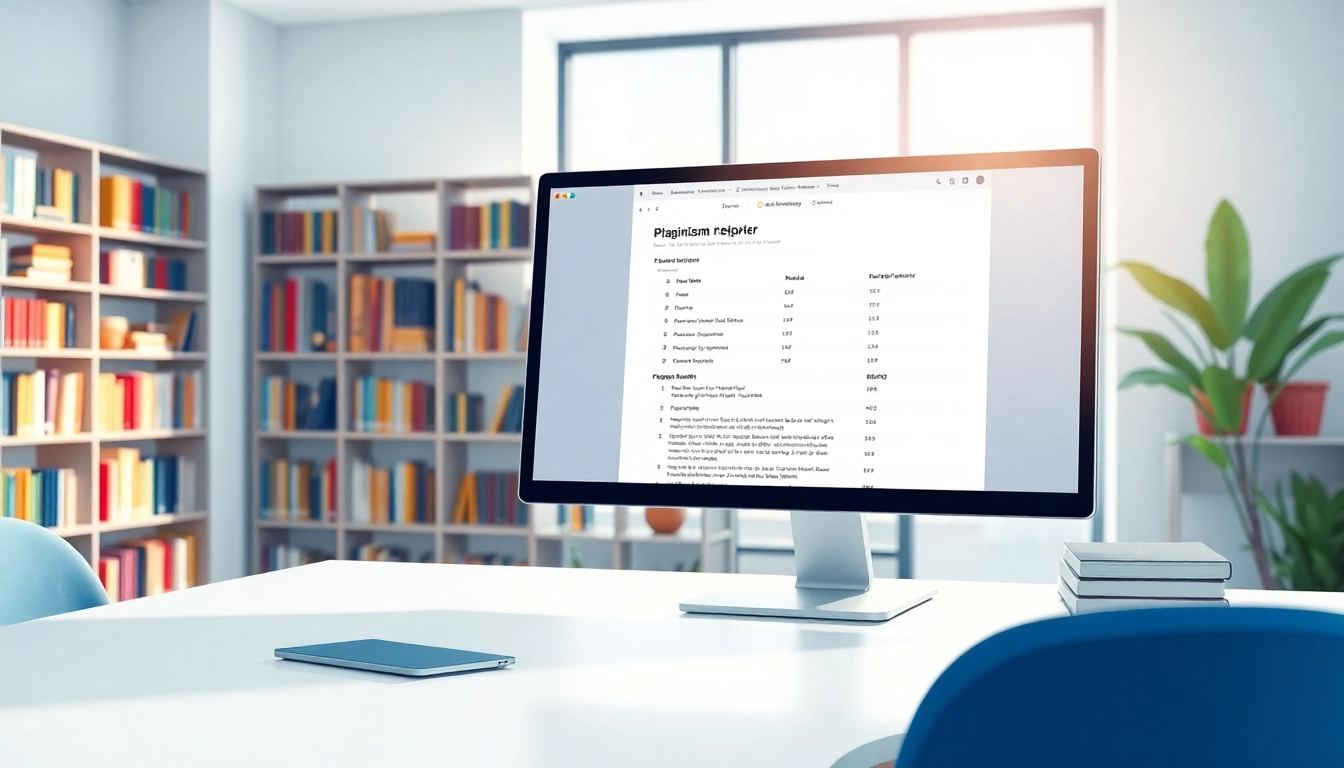Understanding Plagiarism and Its Implications
Plagiarism is a serious offense in both academic and professional circles. Understanding what constitutes plagiarism and its implications is crucial for anyone who engages in writing, whether it be students, academics, or professionals. This section will delve into various facets of plagiarism, shedding light on its ramifications and the ethical considerations that surround it.
What Constitutes Plagiarism?
Plagiarism can be defined as the act of using someone else’s work, ideas, or intellectual property without proper attribution, presenting it as one’s original material. It can manifest in various forms:
1. Direct Plagiarism: Copying text verbatim from a source without quotation marks or citation.
2. Self-Plagiarism: Reusing one’s prior work or data without acknowledgment.
3. Mosaic Plagiarism: Interspersing copied phrases from numerous sources into new text without proper attribution.
4. Accidental Plagiarism: Inadvertently failing to cite sources or misquoting.
The digital age has complicated matters; with so much information readily accessible online, distinguishing between inspiration and plagiarism can sometimes be challenging. However, the responsibility to use sources ethically rests with the writer.
Consequences of Plagiarism
The consequences of plagiarism are often severe and multifaceted:
– Academic Penalties: Students can face failing grades, academic probation, or even expulsion from educational institutions. Colleges and universities have strict policies against plagiarism, as it undermines academic integrity.
– Professional Repercussions: In the workplace, plagiarism can lead to job termination, loss of credibility, and legal action. Professional writers, journalists, and researchers who plagiarize may find it challenging to regain trust.
– Legal Ramifications: In cases of copyright infringement, the legal consequences can be significant. Original creators may pursue lawsuits against those who plagiarize their work, resulting in financial penalties.
Understanding these consequences emphasizes the importance of academic integrity and originality in writing.
Ethics of Academic Writing
In academic circles, references and citations are not merely formalities but ethical obligations. Engaging with existing literature comprehensively and ethically enhances the credibility of one’s work. The ethical practices in academic writing include:
– Thoroughly researching sources: Investigating reputable materials can help to establish a robust foundation for your arguments.
– Utilizing citation styles properly: Familiarizing oneself with various citation formats, such as APA, MLA, or Chicago, ensures correct attribution.
– Acknowledging collaborator contributions: Giving credit where it’s due fosters a collaborative academic environment.
By adhering to these ethical standards, writers not only maintain their integrity but also contribute to a rich, collaborative intellectual landscape.
How Plagiarism Checkers Work
Plagiarism checkers are sophisticated tools designed to identify similarities between documents and vast databases of published work. Understanding how these tools function can help in selecting the right one for your needs.
Introduction to Plagiarism Checking Algorithms
Plagiarism detection tools leverage advanced algorithms to compare text against a pre-existing database of documents, academic papers, and web content. Here’s how they generally work:
1. Text Matching: The software scans the input document and breaks it down into smaller components, such as sentences or phrases, to search the database for identical or similar text.
2. Semantic Analysis: Advanced algorithms not only check for exact matches but also analyze the semantics of the text. This helps to identify paraphrased content, where the phrasing may be altered but the underlying ideas remain unchanged.
3. Reporting: Upon completion of the scan, the tool generates a report outlining the percentage of originality, citations, and any matched content, often pointing out the source of the matched content.
These tools are crucial for scholars and writers aiming for originality, as well as for educators concerned about integrity in student submissions.
Different Types of Plagiarism Detection
There are primarily two types of plagiarism detection: Manual and Automated.
– Manual Detection: This requires an individual to read through the document and compare it with source materials. While painstaking and time-consuming, it often provides nuanced understanding and context that algorithms might miss.
– Automated Detection: This involves the use of software tools to scan the text against massive databases of published works. While these tools are typically faster and can handle a large volume of text, they may produce false positives or overlook some instances of plagiarism.
Both methods have their merits, but the choice often depends on the specific requirements of the task at hand.
Comparison of Manual vs Automated Checks
The choice between manual and automated plagiarism checks largely depends on factors such as:
– Volume of content: Automated tools excel in processing large documents efficiently.
– Nature of content: In-depth analyses of nuanced writings may still require a human touch.
– Time constraints: Automated tools provide quicker results, which can be vital in deadlines.
Ultimately, an effective plagiarism detection strategy often integrates both manual and automated approaches for optimal results.
Choosing the Right Plagiarism Checker
With numerous plagiarism checkers available, selecting the appropriate one can be overwhelming. Understanding key features and comparing top tools can assist in making an informed decision.
Key Features to Look For
When assessing plagiarism checkers, consider the following critical features:
1. Database Size: A larger database increases the chances of detecting potential plagiarism.
2. Accuracy: Look for tools that utilize advanced algorithms and machine learning for improved precision and the ability to detect paraphrasing.
3. Reporting Capabilities: Effective tools provide comprehensive reports, detailing matching text and sources, along with originality percentages.
4. User-Friendly Interface: An intuitive layout helps users navigate easily through the tool and interpret results efficiently.
5. Integration Within Other Tools: Some plagiarism checkers offer integrations with writing software, making it easier to check for plagiarism in real-time.
Top Plagiarism Checkers Compared
Here’s a brief comparison of some of the popular plagiarism checkers in the market:
– Grammarly: Offers a plagiarism checking service integrated with its grammar and styling tools, ideal for writers focused on overall writing improvement.
– PapersOwl: Known for its robust AI-powered checking system, it provides users with a high degree of accuracy across various file formats.
– DupliChecker: Unlike many others, this free tool offers essential features without requiring a paid subscription, making it accessible for students.
– Scribbr: Tailored specifically for academic use, it scans manuscripts against university databases, ensuring students maintain high standards of originality.
Each tool comes with unique advantages and disadvantages, depending on the user’s needs.
User Reviews and Ratings
Before selecting a plagiarism checker, it’s beneficial to review user feedback. Ratings often reveal not only the effectiveness of a tool but also common issues encountered by users. Platforms that allow for user reviews allow potential clients to evaluate:
– Ease of use: Is the interface intuitive?
– Customer support: How responsive is the support team for users facing technical issues?
– Overall satisfaction: Do users feel the checks are comprehensive and effective?
By reviewing user experiences, one can select a tool that aligns best with their needs and expectations.
Tips for Avoiding Plagiarism
Prevention is better than detection when it comes to plagiarism. Here are several effective techniques to ensure originality in writing.
Best Practices in Academic Writing
Academic integrity is rooted in transparency and originality. Implement the following best practices to avoid plagiarism:
– Cite All Sources: Whether using direct quotations or paraphrasing, always provide accurate citations to acknowledge original authors.
– Use Plagiarism Checkers: Before submitting your work, run it through a reliable plagiarism checker to identify unintentional similarities with existing works.
– Maintain Good Research Habits: Take diligent notes and provide clear distinctions between your ideas and the information sourced from others.
Effective Citation Techniques
Proper citation is essential in academic writing. Various styles exist, including:
– APA Style: Commonly used in social sciences, it emphasizes the author’s name and the date of publication in-text.
– MLA Style: Often used in the liberal arts, it focuses on the author’s name and page number for citations, which appear in the Works Cited page.
– Chicago Style: Emphasizes footnotes or end-notes along with a bibliography for a comprehensive listing of sources.
Whichever style is used, ensure consistency throughout the document to maintain professionalism and credibility.
Utilizing Paraphrasing Tools
Paraphrasing can be a powerful tool to derive new insights from existing content. Consider the following when using paraphrasing tools:
– Understand Context: Understand the source material well enough to grasp the intended meaning before rewriting.
– Alter Structure and Wording: A good paraphrase involves more than just changing a few words; it should reflect a new structure and voice.
– Always Attribute: Even when paraphrasing, proper attribution is necessary to acknowledge the original author.
Getting the Most Out of Your Plagiarism Checker
Once you’ve selected a plagiarism checker, maximizing its potential can further enhance your writing integrity.
How to Interpret the Results
Understanding the results from plagiarism checking software is crucial for effective use. Typically, the output includes:
– Similarity Index: This shows the percentage of text that matches other sources, which can indicate areas that need more scrutiny.
– Highlighted Matches: The tool often highlights the sections that are similar to other works, providing links to the sources for easy reference.
– Suggested Edits: Some advanced tools offer recommendations for revising flagged sections for greater originality.
Integrating Feedback into Your Writing
While plagiarism checkers highlight potential issues, integrating their feedback is the next step:
– Revise Similar Texts: Modify any flagged text to enhance originality, ensuring that the essence of your message remains intact.
– Consult Style Guides: Double-check citations and reference formats to ensure they align with your required style.
– Seek Peer Review: Having colleagues review your work can provide additional insight and catch issues that automated tools might miss.
Continuous Improvement Strategies
Originality in writing isn’t just about avoiding plagiarism; it’s about fostering creativity and developing a unique voice. To enhance these skills:
– Engage with Varied Texts: Reading a wide range of materials exposes you to diverse writing styles and content, which can inspire creativity.
– Practice Writing Regularly: The more you write, the more you develop your voice and strengthen your ability to articulate ideas clearly.
– Take Writing Courses: Invest in workshops or courses focused on writing and research skills to learn advanced techniques for maintaining originality.
By focusing on these strategies, writers can not only avoid plagiarism but enhance their overall writing quality, paving the way for authentic expression and academic success.



